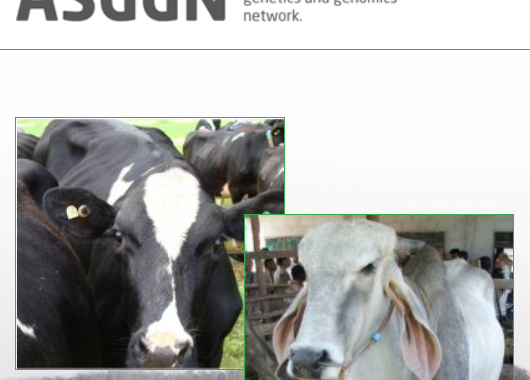By Kajal Devani
Director of Science and Technology
Canadian Angus Association
The Beef Improvement Federation (BIF) symposium is an annual convention that brings together beef researchers, technology providers, extension specialist, graduate students of beef genetics, and primary beef producers. Typically held in June, the convention rotates across US states, and has also been held in Calgary, Canada. In fact, BIF 2023 is scheduled to be held in Calgary just prior to the 2023 Calgary Stampede. The convention is a great way to advance the Federation’s mandate to connect science and industry to improve beef cattle genetics.
One of BIF’s objectives has been to standardize all performance records across beef breeds nationally and internationally. The BIF-recommended guidelines for performance recording provide beef breed associations, industry partners, and beef producers with a framework of economically-relevant traits to measure, and standardized methods and scoring guidelines for the traits. The Federation has responded as market and environmental changes pose opportunities and challenges to beef production industries. The annual BIF convention has become a place to discuss these, and explore possible solutions towards improvement in beef production with representation from multiple sectors of the industry as well as scientific researchers and technology providers.
Previous BIF conventions addressed topics ranging from fertility (estrus synchronization, timed-AI, sexed semen, genetic correlations of scrotal circumference to other traits) to consumer demands (beef production as a consumer-driven business; who is our consumer; what do they want today and 20 years from now; the genetics of meat science; and what can we do to improve the palatability of beef). The annual BIF convention has become a place to learn from the experiences of other livestock species and from beef production practices of other countries. For example, Dr. Mark Trotter from Central Queensland University shared Australia’s experience of adopting GPS-equipped tags to monitor location, movement, and health of Australian beef cattle in 2019. This technology (editor – coming to the UAlberta Roy Berg Kinsella Ranch soon) was novel at the time, and it was exciting to see in practice its possibilities and advantages.
This year, the 53rd BIF Symposium and Convention was held physically in Des Moines, Iowa, and made available virtually to those who were not able to travel due to global COVID-19 pandemic restrictions. It has been a year of increased awareness and appreciation for genetic tools and technology as the world charges forward with polarizing views on mRNA vaccines, alternative beef sources, and gene-edited livestock and aquaculture species. BIF convention participants follow advancements in gene editing in cattle closely. Dr. Alison Van Eenennaam has continually reported her lab’s progress in this field at BIF. The first two traits gene edited by Dr. Van Eenennaam’s lab were horns and sex, both edited to increase animal health and welfare and decrease the industry’s environmental footprint. Participants at BIF convention 2021 discussed at length possible ways to address that 46% of US consumers surveyed said that they would not eat meat from a gene-edited animal. Another trait that has significant impact on the industry’s environmental footprint, and on producer profitability, is fertility. This year, BIF convention participants heard from Dr. Francisco Peñagaricano’s lab on genes and biological pathways that contribute towards male fertility. Beef production is complex, and genetics play a significant role in the success of beef production from conception to the consumer experience. Genetic improvement is often a good solution for production challenges as genetic improvement can be long-lasting and cost-effective.
Central to the BIF mandate to promote genetic improvement in BIF, the convention typically includes lengthy discussions on genetic evaluations, advances in methodology and trait definition, and challenges for which we may or may not find a solution. This was particularly valuable when beef industries started incorporating genomics technology into genetic evaluations, and again when the methodology for this was refined from a multistep method to a single-step genetic evaluation. For several years, multiple scientific groups presented background information on genomics technology and updated BIF convention participants on the advances being made in these fields. This gave extension specialists, breed association technical staff (such as me), and producers the opportunity to ask questions and to provide feedback and direction to the scientists dedicated to developing tools for the industry. This is an ongoing discussion as genomics technology is advancing so fast. At the BIF convention, we can learn from the early adopters who share their experiences.
I have had the incredible opportunity to attend the annual BIF convention since 2010. As the Director of Science and Technology for the Canadian Angus Association, I have appreciated the opportunity to keep abreast of new tools for the beef industry, to learn about genetic evaluations and genetic selection tools and application, and to have an extensive network of scientists, extension specialists, and primary beef producers who have dedicated themselves to genetic improvement in beef cattle to learn from.





 John Basarab chatted with Gentec about his new position as Head of Beef Operations. The highlights of that conversation are below.
John Basarab chatted with Gentec about his new position as Head of Beef Operations. The highlights of that conversation are below.